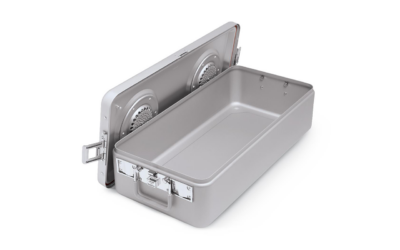Surgical booms have become increasingly popular with the advent of minimally invasive surgery and integrated operating rooms. Booms can maximize space in hightech surgical suites, where additional equipment is required.
According to Reportlinker.com, the total market for surgical booms was valued at $1.74 billion last year. The market is expected to rebound from the economic recession – the report predicted a total of $2.3 billion in annual sales in the year 2018. OR integration and minimally invasive surgery are both upward trends that will further fuel sales of related equipment as well, including image capture devices and high-definition surgical cameras and the booms that store and carry them.
Research and Markets cites the increased popularity of minimally invasive surgical procedures (MIS) as the driving force in the sales of booms, displays and PACS monitors. According to the health care market researcher, the market for MIS equipment is expected to grow at just over 8 percent per year, to reach $35.5 billion by 2016.
According to an article written by Jay Ticer from ECRI’s Health Devices Group, most facilities today that are planning to renovate or build operating rooms are likely considering adding a minimally invasive surgical (MIS) operating room. MIS suites are equipped with more equipment than a traditional OR, including ceiling-mounted booms and articulating arms that carry various devices. Booms eliminate the need for video carts and get cords and cables up off the floor, making for easier maneuvering around the patient and equipment by the surgical staff.
Today’s high-tech booms have centralized controls that enable a nurse or physician to control lights and other equipment from a single location.
One of the most common challenges health care facilities face when integrating an existing operating room is one of logistics. Millennium Research Group recently reported that the OR integration market will grow approximately 15 percent per year through 2015. “As they become more popular, hybrid ORs also increase demand for new hybrid-compatible versions of such products as surgical tables and equipment booms, while increasing the complexity and cost of integrating devices,” the report said.
Booms provide a solution to both fitting new equipment into existing rooms – and getting it out of the way when it’s not in use – and controlling the additional equipment efficiently. Today’s high-tech booms have centralized controls that enable a nurse or physician to control lights and other equipment from a single location. Some booms, also referred to as equipment management systems, are customizable and can be configured for displays and other functions, such as electrosurgery and digital imaging data transmission. Both features can help an operating room become more efficient, which can help justify the cost of the equipment by increasing patient throughput in a single room.









